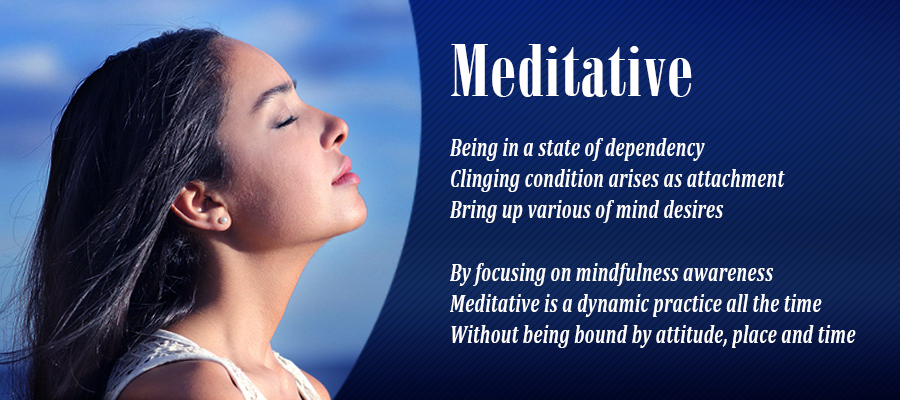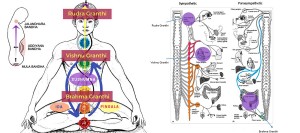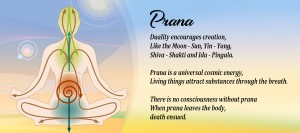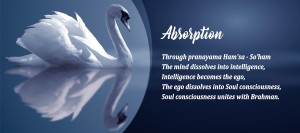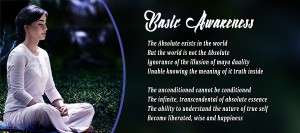Meditative attention is an art of acquired skill which brings clarity and an intelligence that sees the true nature of things. Among the variety of techniques in meditation, the art of attention is the common thread underpinning most schools of meditation. So, it can be appreciated that the essence of meditation practice is to be found in the word attention!
But how to do it? What is the practice?
Unclear advice is often given to a meditator such as be mindful or be attentive. To recognize the fact that most of us tend to function in a rather inattentive, unfocused way, which results in a rather superficial experience of life, is to see the necessity for training the errant attention in a systematic way, under guidance.
This trained attention has the effect of uncovering, or laying bare, things as they really are. It is the primary attention that sees through the mind to the underlying processes. In laying bare the reality of psycho-physical phenomena, the salient characteristics are revealed without interfering with them.
The art of this bare attention is to simply register the predominant object in one’s experience as it arises without preference or interference, as a witness. That is, just registering or noting the changing phenomenon without reaction be it sensation, sound, thought or a mind-state. However, if there is a reaction during the observation, as is natural for the untrained mind, then that too must be noted. This way of seeing has the potential to uncover the true nature of the phenomenon observed and thus a non-reactive, unconditioned awareness is acquired that brings liberating ‘in seeing’ or insight knowledge.
An Orientation to the Six Senses
Being attentive is not a practice that needs to be confined to a crossed-legged posture. Meditative attention is a dynamic practice of paying close attention to what you are doing in whatever posture or situation you happen to be in. The way to orientate in this practice is to literally come to our senses. That is, a strategy of being fully aware of all your activities through a conscious orientation to the five senses and the ‘sixth sense’ the mind.
The Six Sense is the name for the five physical senses: eye, ear, nose, tongue and body and the sixth sense, which is a collective term for the five kinds of consciousness: eye-consciousness, ear-consciousness, etc. So, the practice is to be consciously attentive at the predominant sense base. For example, being on guard at the eye-door allows you to notice the effects of the contact between the eye and the visible objects and how you are relating to them. This orientation to any sense door brings awareness of what is happening during any sense impression and with it the ability to monitor the associated feelings and consciousness that arise.
The actual meaning of ‘attention’ indicates its practice: to attend upon, to be present with. By being attentive presence of mind is developed. While there are degrees of attention (down to lack of attention), it can be said that there are two types: natural attention, which is automated attention and the intentionally deployed attention that is developed in meditative attention.
Deployed attention is either passive, or in the sense of being applied, active. The passive mode is bare attention, that is just registering what is happening, in a receptive state of mind, without reaction. The active mode of attention is applied when any kind of movement or action is done, including active reflective thought on things observed.
Check, where is our attention at this present moment? what sense impression is predominant now? Is it the eye-door as you view the page, the ear-door attracted by sounds or the touch sensations of the body’s contact on the chair we’re sitting on. This moment is the time to establish the habit of being consciously present at a sense door and notice what is happening during a sense impression.
Choose a sense and be attentive to what is happening there. What feeling is present, what is the quality of that feeling, is it pleasant, unpleasant or neutral? What thoughts are associated with it? Take particular notice of the changes. It is useful to make a habit of checking yourself during our daily routine.
Appearance of Dependency
As our experience the series of causal events, we can intercept them at the linkage of either consciousness, sense impression and/or feeling. The ability to do this gives us the potential to be free of the conditioned cycle of suffering that most people are unknowingly trapped in.
We can untangle the tangle by ‘insighting’ into dependent origination through awareness at a sense door. What we are experiencing now is the result of a series of events that arose because of previous conditions and is linked as a causal chain of effects, i.e. as cyclic existence.
It is useful to have a working knowledge of the eleven links in the cycle of Dependent Origination. Even such theoretical knowledge will point you in the right direction and the potential to be free of the conditioning it causes:
- With Ignorance as a condition Karmic Formations or Volitional Actions arise;
- With Volitional Actions as a condition Consciousness arises;
- With Consciousness as a condition Mentality/Materiality arises;
- With Mentality/Materiality as a condition the Six Sense Bases arise;
- With The Six Sense Bases as a condition Contact (sense impressions) arise;
- With Sense Impressions as a condition Feelings arise;
- With Feelings as a condition Grasping arises;
- With Grasping as a condition Clinging arises;
- With Clinging as a condition Attachment arises;
- With Attachment as a condition Becoming arises;
- With Becoming as a condition Pain, old age and death arise, i.e. conditioned suffering.
The Technique of Mental Noting
A useful device to support meditative attention is naming or labelling the various objects during the observation of your own body and mind. Used judiciously, it is a very useful tool for focusing and sustaining the attention. The noting is done by repeatedly making a mental note of whatever arises in your body and mind experience. For example; hearing, thinking, touching etc. This is a powerful aid to help establish bare attention, especially at the beginning of the practice, when it is vital to systematically note or label as much as possible to establish the attention. Otherwise, we are likely to get lost in unnoticed wanderings with long periods of inattention.
Having succeeded, even partially, in sustaining the attention, then the mental noting can be dropped, especially if the noting has become mechanical or is so clumsy that it is interfering with the subtle attention. Having acquired the ability to monitor experience with just bare attention, will need to return to the mental noting only when the attention weakens, is lost or needs to be re-established.
The mental noting can be combined with the practice of orientating to sense impressions by the naming of the physical and mental objects as they arise at the six sense doors. Be careful not to analyse what is being observed, just register or note it without reaction.
Four Scopes of Attention
The four scope of attention are structures or frames of reference used to support the practice. They are can be used as guidelines or frames of reference to help you direct the attention as investigate the various experiences in body and mind.
- Attention to the Body. Directed to apprehending the primary elements of the body (earth, air, fire and water) i.e., hardness, softness, temperature, fluidity and movement within the body and/or awareness of the various body postures, movements and actions in daily activities.
- Attention to Feelings or Sensations. Noting the qualities of feelings as either pleasant, unpleasant or neutral while being careful to differentiate the primary feeling from the emotional story.
- Attention to the Consciousness and Mind-States. The consciousness is the ‘knowing’ of anything, eg. a physical sensation and the knowing of it. Particular attention is paid to the mind-states, eg. happiness, sadness, agitation and seeing their arising and passing away.
- Attention to the Mental Content. This is not analysing mental events or classifying them, but using the attention to passively register the things of the mind thoughts, ideas and concepts as a witness without commentary.
The Two Modes of Meditation
There are two modes of meditation: Calm and Insight.
Calming or serenity meditations use techniques of fixing on a single object, excluding all other objects, to produce calm and one-pointedness. Examples are techniques using visualization, following the respiration, mantras and contemplation.
The second meditation mode is made up of practices that develop awareness. That is, paying close attention to the predominant object in physical and mental experience with moment-to-moment awareness. This meditative attention will lead to insight knowledge.
The ability to successfully manage ourself in meditation depends on whether we can make appropriate adjustments or fine tuning during a practice session.
This ability is based on understanding these two modes of meditation: for example, if you become strained or tense during insight meditation, switching to the serenity meditation mode will calm and relax the mind; or if you became stuck in a becalmed mind-state in serenity meditation, you can invigorate the mind with an awareness exercise to give it an investigative edge.
3 Strategy Psychological
It is necessary to appreciate the nature of practice as applied to meditation because it could mistakenly be taken to imply the notion of control. This is far from the case, as the meditator needs to have a flowing receptivity to the experience without in any way controlling it. So discipline in the meditation context can be misunderstood as imposing one’s will to control the practice. Actually, it is no more than following the directions and persistently applying the instructions with sensitivity. So correct practice is repeated performance to develop skills, without controlling or interfering with the experience. It’s developmental the way to growth.
It is important at the beginning of the practice to notice how we are relating to our experience or what our attitude to it is. If it happens to be reactive or judgmental then it is necessary to change the way you relate to things, situations or people, by cultivating qualities of acceptance, empathy and of ‘letting go’. Being more accepting and allowing, without the struggle to gain something, creates a natural meditative state that facilitates the practice.
To successfully self-manage practice it is necessary to take a holistic approach and to work within a supportive structure. Such a system is found in the three strategy of practice, which is a complete and integrated system supportive of the psychological well being of the practitioner :
- Restraint of behavior in order to harmonize relationships
- Recollectedness, especially regarding developing the meditative art of ‘focusing’
- Discernment, which is the wisdom that sees the true nature of mind and existence.
Mental Impurities
Mental impurities are said to be present in three stratified layers in the mind: dormant, manifest and expressed. These impurities, or the three poisons of greed, hatred and ignorance, can be dealt with in three ways: first their expression can be restrained by harmonizing one’s behavior; secondly, when they manifest in the mind, for example as angry thoughts, then they can be skillfully suppressed through concentration practices in serenity meditation; eventually when they are seen at their primary source or dormant level then they can be eradicated through insight meditation.
Recollectedness
The quality of recollectedness or full awareness is acquired through the development and the managing of three meditation skills: Right Effort, Right Attention and Right Concentration.
Effort is right in the sense of arousing, sustaining and balancing the effort.
Attention right meditate when there is close and impartial attention to the various meditation objects as they arise.
Right Concentration is when it centres upon and intensifies the meditative focus.
Too much effort makes the mind restless, not enough makes the mind slack, too much concentration restricts the awareness, not enough and the mind loses its focus, but there can never be too much attentiveness, as the acuity of attention is the factor which will deepen the practice. The successful managing of these meditation skills will produce mindfulness or presence of mind, the prerequisite for a finely tuned discernment.
Discernment and Insight
Discernment is the intelligence that uncovers the true nature of things by seeing through the mind to the underlying processes. It is based upon a non-reactive awareness, a perfectly attuned attitude and a penetrative attentiveness that has the potential to see what really is. The outcome of such practice is direct experiential knowledge of the three universal characteristics of existence: change, un-satisfactoriness and impersonal process which culminates in a series of insights freeing one’s view from the distortions caused by ignorance.

